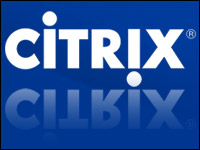
Linux has a bright future in the business world, according to an IDC white paper sponsored by the Linux Foundation and released Tuesday. By 2011, expenditures on Linux-based hardware, software and related services will reach US$49 billion, more than double 2007’s figure of $21 billion, according to the study’s authors. The growth, they said, will be driven by enterprise deployments.
While the Linux platform’s current share of total software revenue now stands at 4 percent of the industry’s total $242 billion, IDC expects that share to increase to 9 percent by 2011, when Linux-related software revenue will reach $31 billion in a total market that will grow to $330 billion.
“IDC is predicting that the Linux ecosystem will grow to $49 billion by 2011, and the revenue associated with the Linux operating environment is a tiny portion of that ecosystem,” Brett Waldman, an IDC analyst and coauthor of the white paper, told LinuxInsider.
From Infrastructure to Business
Although Linux server operating environments (SOEs) were once made up primarily of Web and basic infrastructure deployments 10 years ago, more recent volume deployments have expanded the scope to include other basic workload deployments.
Business processing deployments including database, enterprise resource planning, decision support and general business processing have increased steadily in terms of their share of total workload deployments, IDC analysts found. They grew from 6.6 percent of new Linux deployments in 2003 to 8.2 percent in 2007. Similarly, decision support also saw growth, increasing to 9.1 percent in 2007 from 7.3 percent in 2003.
“IDC believes that systems integration activities represent the largest opportunity for Linux and open source services, as Linux workloads shift from infrastructure-oriented workloads to more mainstream business-oriented workloads,” Waldman said.
The migration from existing Unix deployments to Linux for the most part appears to account for the growth of Linux as a platform for business-oriented workloads in combination with an “organic growth” of the deployments in these same workload areas, IDC found.
A Unix Migration
One important enabler behind the growing adoption of Linux has been the move away from Unix on higher-cost RISC (reduced instruction set computing) platforms to Linux on lower-cost industry standard x86 platforms, according to IDC.
Among those more likely to migrate from existing Unix servers to Linux are “users in verticals such as government, financial services and general services,” the reported stated. Industries outside these areas are less apt to choose Linux to replace Unix with Linux but remain friendly to it as an alternative solution.
As such, Microsoft and Windows will continue to “present a significant long-term challenge for Linux,” with Windows service-oriented enterprise deployment-related software revenue, including XP and Vista client operating revenue, totaling $127 billion in 2007, some 53 percent of the worldwide software market.
Although Microsoft’s super-sized installed base will continue as the largest of any SOE, IDC expects that Microsoft will vie for Unix migration opportunities.
“Linux is not likely to directly replace a Windows SOE. But both Linux and Windows will continue to compete vigorously for greenfield opportunities,” Waldman noted.



















































